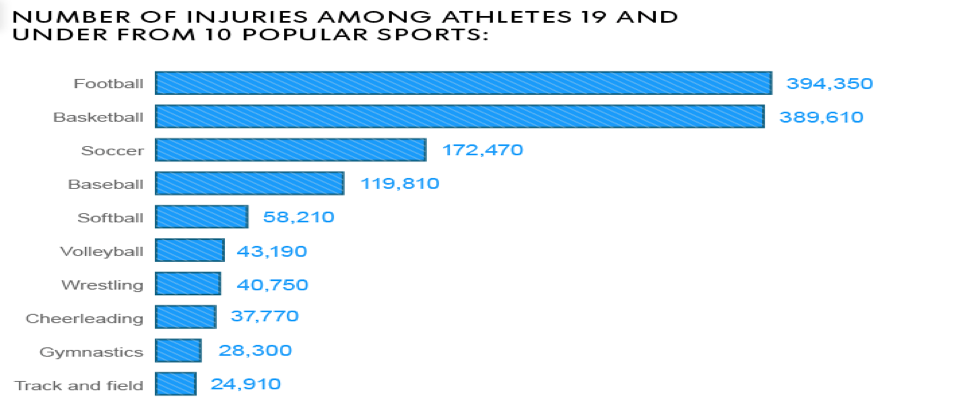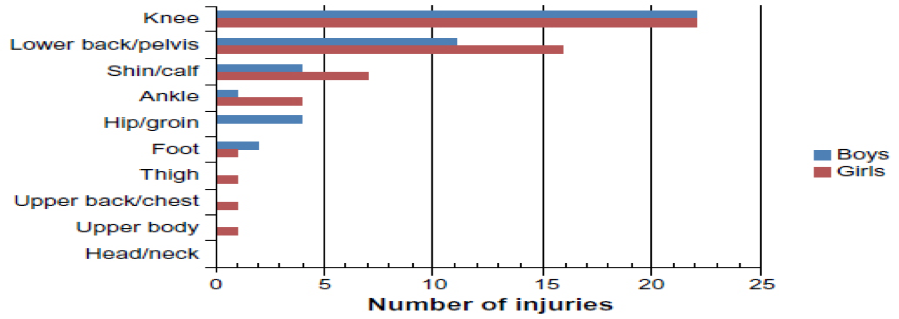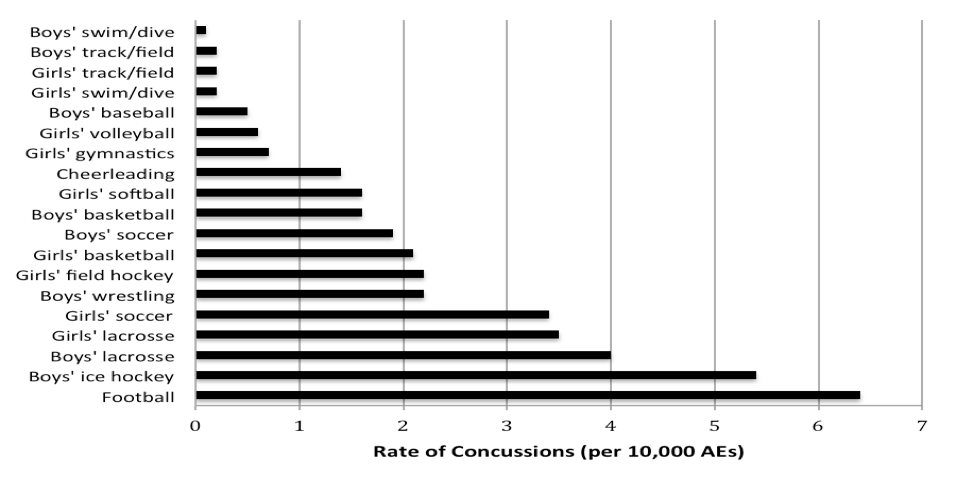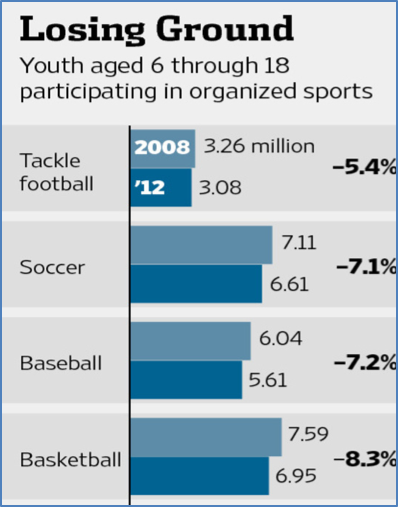We all want to be good or want our children to be the best in the game. The main thing some people may take out of the game is the FUN. Overtraining in sports is a huge threat to the physical and mental health among young athletes. Each year more and more participants in these sports are growing. Physical and mental burnout is a huge threat. Once a burnout victim quits sports, they rarely ever return. This plays a huge role with the actions of parents and coaches. Hopes of reliving their childhood, being on the starting lineup and earning a scholarship, can all drive a parent down this rigorous path.
Having a child play in numerous leagues leads to physical harm. This leads to overuse injuries. Using the same muscles over and over again can cause harm to their body. The three main sports that these young athletes are getting hurt in are basketball, football and soccer.

The table below describes the overuse in injuries in basketball according to location and gender.

There was a study done with 207 youth basketball players participating. 80 (39%) had sustained at least one overuse injury in six months. The knee was the most common injured site. This is mainly described as any physical complaint related to a game or practice. Any significant pain or discomfort that restricted normal training was taken into consideration.
It is stated a fact that every twenty five seconds or 1.35 million times a year, a young athlete will suffer a sports injury severe enough to go to the emergency room, according to a new research report by Safe Kids Worldwide. Concussions account for 163,00 of these ER visits. That is a concussion related ER visit every THREE MINUTES. Athletes ages 12-15 make up most of half of these. Younger children with concussions take a longer time to recover than older children. We must teach young athletes how to prevent this and to speak up about their injuries.

Most people are very familiar with feeling exhausted, stressed, and just burned out. Young athletes are at the top of the chain for feeling this way. Burnout is typically defined as physical/emotional exhaustion and reduces athletic ability. The dropout rate involving young athletes in sports have increased yearly. This is a graph from 2012 and you can only imagine how much it has changed from now. The athletes keep decreasing each year.

There are three main reasons for injuries and burnout in young athletes. There is always a constant pressure to win, train and to perform to a certain standard. This then leads to physical exhaustion and stress. The second reason is that the athlete may feel trapped. The young athlete has invested so much time and energy into the sport but simply does not experience any enjoyment or reward from it. This goes back to the parents trapping them as well. Thirdly, the sport may be controlling the young athlete. It controls their lives and leaves them feeling helpless. Do not get me wrong, youth athletics is a wonderful way to start your child’s journey. It keeps them in school, in a healthy environment and on the right path. They learn, grow and develop many life lessons along the way. There will be many who come out to perform at the highest level, but in the mean time we need to make sure that it is what they want to do and not anyone else.
This blog post was written by Samford University student Hannah Trombley.
References
(Cheng, Fields, Brenner, Wright). (2013, March). Child/Adolescent Injury Research
Retrieved November 23, 2017, from http://pediatrics.aappublications.org/content/105/3/e32?gca=105%252F3%252Fe32&
(Schupak, YouthSportsClub). (2017, April) How to Avoid Burnout in Young Athletes
Retrieved November 23, 2017, from https://www.active.com/soccer/articles/how-to-avoid-burnout-in-young-athletes?page=1
(SafeKidsWorldwide). (August 5, 2013). 1.35 Million Children Seen in ER for Sport Injuries
Retrieved November 23, 2017, from https://www.safekids.org/press-release/135-million-children-seen-emergency-rooms-sports-related-injuries
